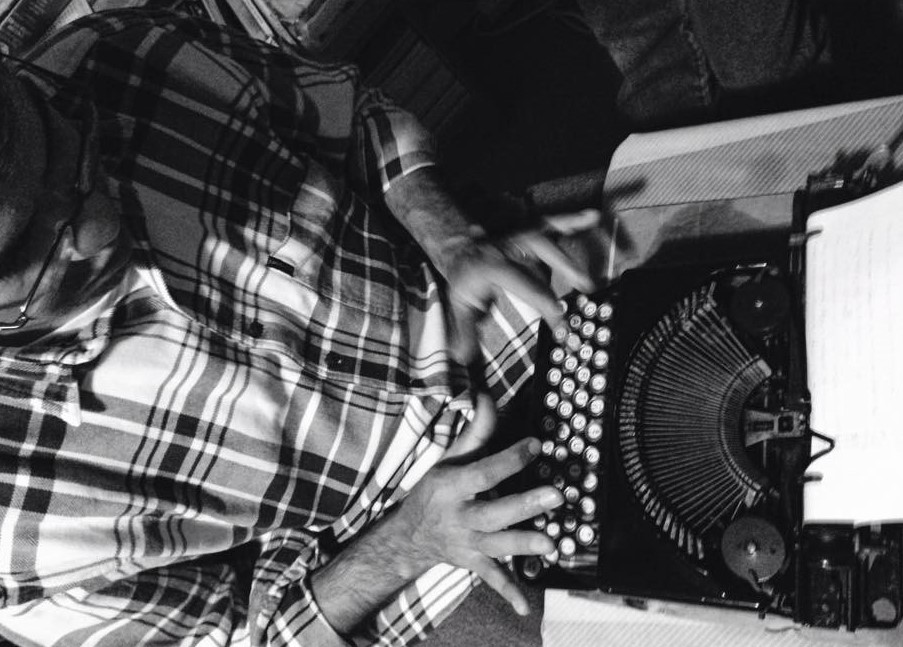
Freddy Rodríguez found himself in front of a canvas, awestruck by the devastation wrought by the tsunami of 2011 in Japan.
He used an air compressor to paint and meshed colors that individually could have represented mud, bricks, limbs, wires, plastic, rubber, clouds, light. Together they merged into the chaos of life colliding with life. He ran waves of pain and motion through them, turning them into what he saw as a visual language of pain and loss.
The outpouring in his studio of Flushing, Queens, led to a series of paintings that grew to thirty-one. He simply called the series “Tsunami.”
Rodríguez is no stranger to the expression of loss through art.
The artist, born in the Dominican Republic in 1945 and based in New York City since 1963, was the creator of the Flight 587 Memorial commissioned by the city after the crash of a passenger airliner bound to Santo Domingo in November 2001. The accident killed 265 people, including 251 passengers, 9 crew members and 5 people on the ground. The memorial now stands in the Rockaway Park neighborhood of Queens, about a mile east from the crash site.
This is how I came to know him.
When I worked on a story about the tenth anniversary of the crash, in 2011, I was struggling to find the survivors of those killed in the crash on short notice. I had gone to the site of the crash and had seen the monument he built — its centerpiece a curved wall with bricks bearing the name of the victims that made a poetic statement about life and death.
He had etched in stone a line of verse from Dominican poet Pedro Mir. Después no quiero más que paz. “Afterwards I want only peace.”
I called the artist then and, as I thought, he had not just had those names placed on the bricks. He had met the families. He had considered their thoughts and feelings as he crafted the memorial. He was able to connect me to them.
I had not heard from Rodríguez since.
He called recently to share the news on his Tsunami paintings.

The Dominican embassy in Japan invited him to exhibit his work in Tokyo and he selected twenty-one of the pieces for the exhibit. He called the exhibit “Impredecible/Unpredictable” and went to visit for the opening in February.
He returned from the event in that city’s Instituto Cervantes feeling that it was a success because it brought together the Dominican émigré community in the world’s largest metropolitan area with the Japanese people who have welcomed them there.
He didn’t expect what would happen next.
After he had just returned to New York he got a phone call from the embassy. They wanted him to return immediately so that he could present and describe his work to a special guest.
It turned out that Empress Michiko Shoda had heard about the paintings. And she wanted to see for herself. She would meet privately with Rodríguez, who was bringing along his wife, with Dominican Ambassador Pedro Vergés (a poet and novelist himself) and with Spanish Ambassador Miguel Ángel Navarro.
Rodríguez had been instructed on all the protocol for the encounter with the renowned imperial consort and expected the meeting wouldn’t go beyond a brief sighting. But he said the empress approached him warmly, took her time to look through the pieces and asked him about his work.
She was “asking really smart questions” about art, Rodríguez said. “She understood that I really conveyed the destruction and the chaos that happened after the tsunami in an abstract manner… you can see the violence of the act in how the paintings were created. I call it creative destruction.”
As he returned from the unexpected meeting he realized what he wants to do with his Tsunami paintings.
“All the paintings were dedicated to the people of Japan and … I spent two years of my life doing that,” he said. “I want them to stay in Japan.”


That is a really cool piece of art 🙂